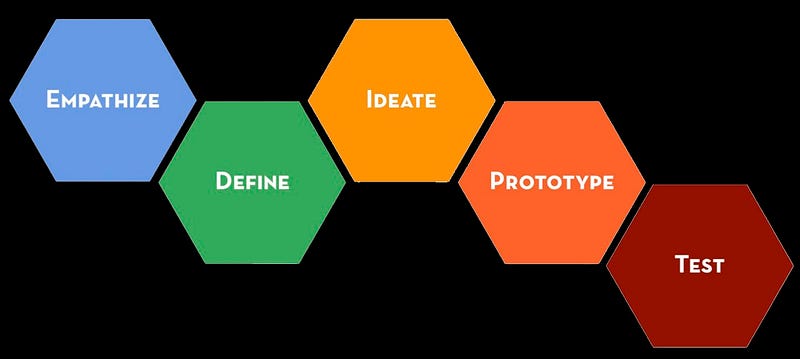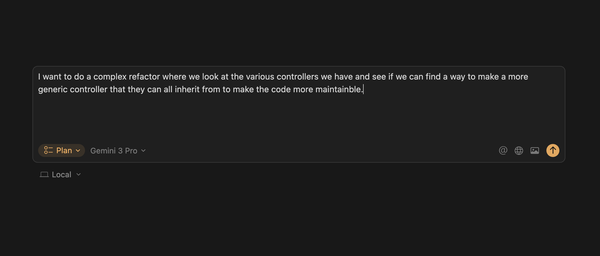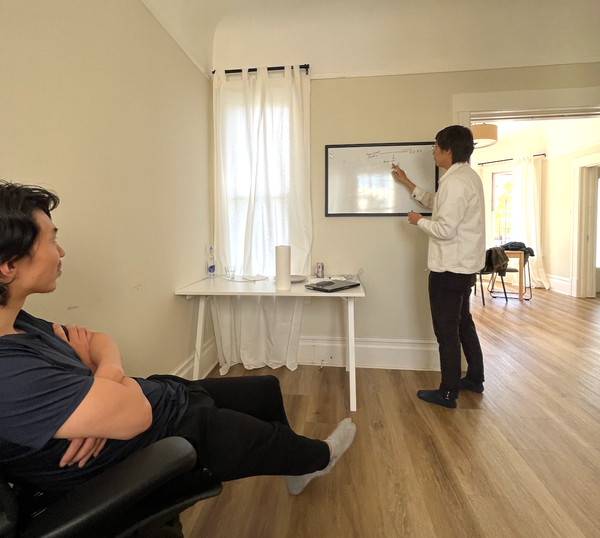A Bias to Action: A Summary of The Achievement Habit
The Achievement Habit is written by Bernard Roth, an engineering professor and co-founder of Stanford’s D School. The book is a half…

The Achievement Habit is written by Bernard Roth, an engineering professor and co-founder of Stanford’s D School. The book is a half biography, half self help book that uses the concepts of design thinking, awareness, and a bias to action to help you shape your life.
Here are my key take-aways from the book:
Live with a bias towards action
Doing is better than not doing.
When you have the choice to think about doing something, vs, doing something, you typically want to do it.
Most great things in life are accomplished by simply getting started. Put pen to paper, write a few lines of code, stretch the canvas, move your feet and you are already 90% there.
Design thinking
Much of the book is spent discussing the design thinking framework which he co-created at Stanford’s D school. Design thinking makes sure that you are solving the *right* problem. Here it is.
Empathize, ideate, prototype, test, iterate

Bernie uses stories and examples to demonstrate that we are often stuck solving the wrong problem and is the main reason why we run into walls and can’t climb over them. He provides a simple framework for applying design thinking to your life as it relates to achieving your goals and finding happiness.
I will do a bigger post on the design thinking process as I have found it provides real value in my life when you remember to apply it..
Reasons are bullshit
Excuses and reasons for behaviour are bullshit, end of.
The sooner you embrace the fact that when you give someone a reason for your behaviour, you are not being honest with yourself, the freer you will become. This resonated with me a lot given that I often find myself making excuses, typically because I have over-promised my time.
There might be really good reasons why you are late to a meeting, but the truth is that at the end of the day you simply didn’t think it was important enough to be on time. If someone told you that your entire family would be killed if you didn’t make it in time to that meeting, you would have found a way to make it there, no matter what the cost. Most situations in life are not life and death, but the point still stands.
You can’t talk yourself out of problems you behave yourself into.
If you never provide a reason, you will be labelled unreasonable which is not ideal, so give your surface reasons if you must but know deep down that it’s bullshit and decide if you really want to keep this experience in your life. No matter what you might say to yourself, your actions are telling a different story.
Trying vs. doing
Doing 10 pushups per day, is better than trying to do 20 pushups.
Doing, is better than trying.
Alright sure, he took this straight from Yoda’s mouth but it’s worth repeating and Bernie does a good job. In his class he will call upon students to come to the front of the room and ask them to try and take something that he has in his hands. Some people manage to take it, but others don’t. When someone is struggling to try and take the object from him, he changes his language and ask them to simply **take it**. The shift in energy is subtle yet powerful, they always manage to take it.
In life we try many things, maybe we should stop trying and start doing. This lesson has helped shape my new self-improvement system, I don’t try and do things everyday, I just do them.
Language matters
The language you use matters and making small changes can lead to a greater feeling of control and empowerment.
And, but
Stop connecting ideas and sentences with but, instead use and. But is negative and contracts, and is inclusive and expands.
I want to read this book but I have too many things to do.
vs.
I want to read this book and I have too many things to do.
Read those two sentences a few times and see how it makes you feel. The first sentence is limiting and constricting, the second is expansive and relaxing.
There are rarely events out of your control that will force you to do one thing or the other, when you use, and, you are able to more clearly see that and solutions to problems will appear more frequently.
Have to vs. want to
You don’t have to do anything, you want to on some level.
I have to breathe.
No, you want to breathe as it keeps you alive.
I have to get this work done.
No, you want to get this work done because you like your job and want to keep it.
Challenged yourself with this one. If you feel like you are the victim of have to circumstances, try changing your words to want to and see how that feels.
Can’t vs. won’t
Of course you can, you just don’t want to. That’s all that needs to be said on this one.
Like, like, wish
The last tidbit I will share is one that I use in my interactions with my teams at Tilt is the like, like, wish method for giving feedback.
When you need to give someone feedback, start by telling them two things that you genuinely liked about their work, or deliverable.
“I like the way you executed on this so fast, and I like how thoughtful the images were”
Then you deliver your feedback in the form of a wish. This removes the personal barb because you are not saying that the person did something wrong, you are simply reflecting that you wish it could have been even better.
“I like the way you executed on this so fast, and I like how thoughtful the images were. I wish that we had of run the copy by a few real users given that it didn’t really land the way we wanted.”
Let this replace the sandwich technique next time you want to give someone, even your partner some feedback.
Should you read this book?
Yes! My little summary won’t do it justice for the reason that I have listened to it twice and got very different things from it each time. Bernie mixes anecdotes along with proven psychological concepts that aim to help you discover who you really are, what you really want, and then gives you a framework for how to get there.
I highly recommend the book if for nothing else then his explanation of design thinking and how it can be incorporated into your life at all stages.
Would love to know what you think about it, let me know in the comments or ping me on Twitter @kentf




